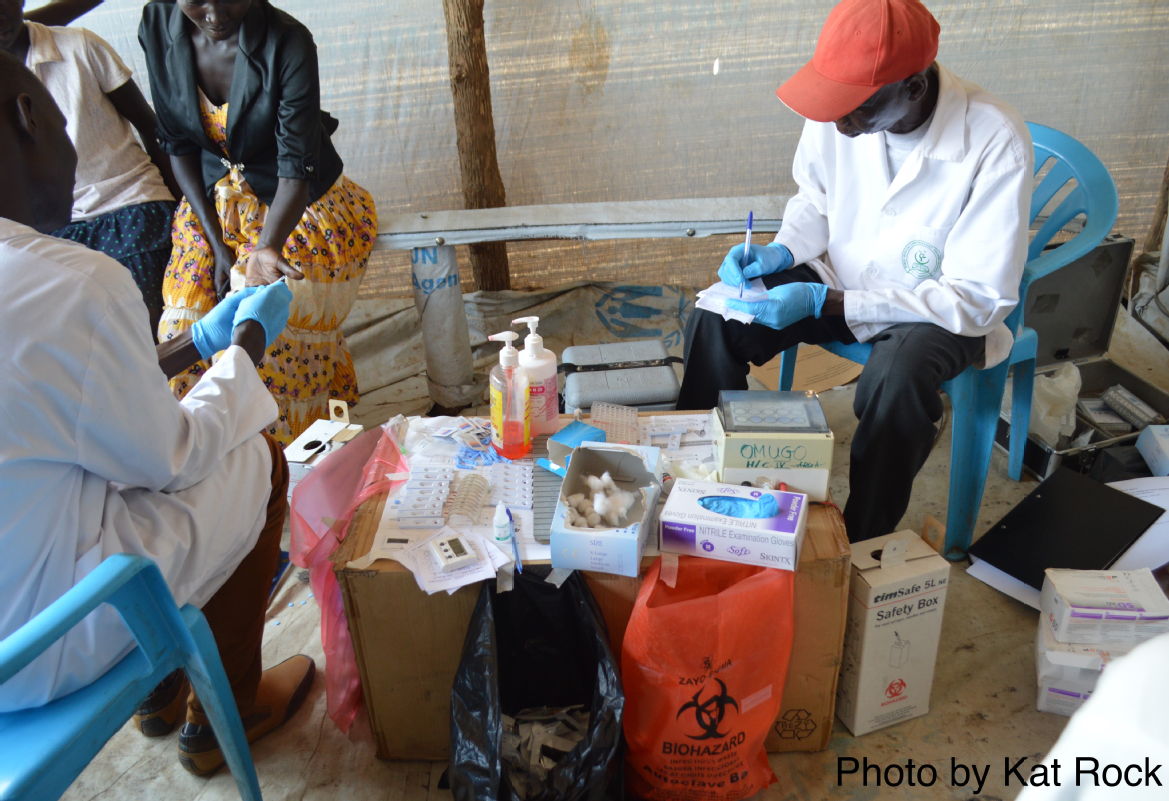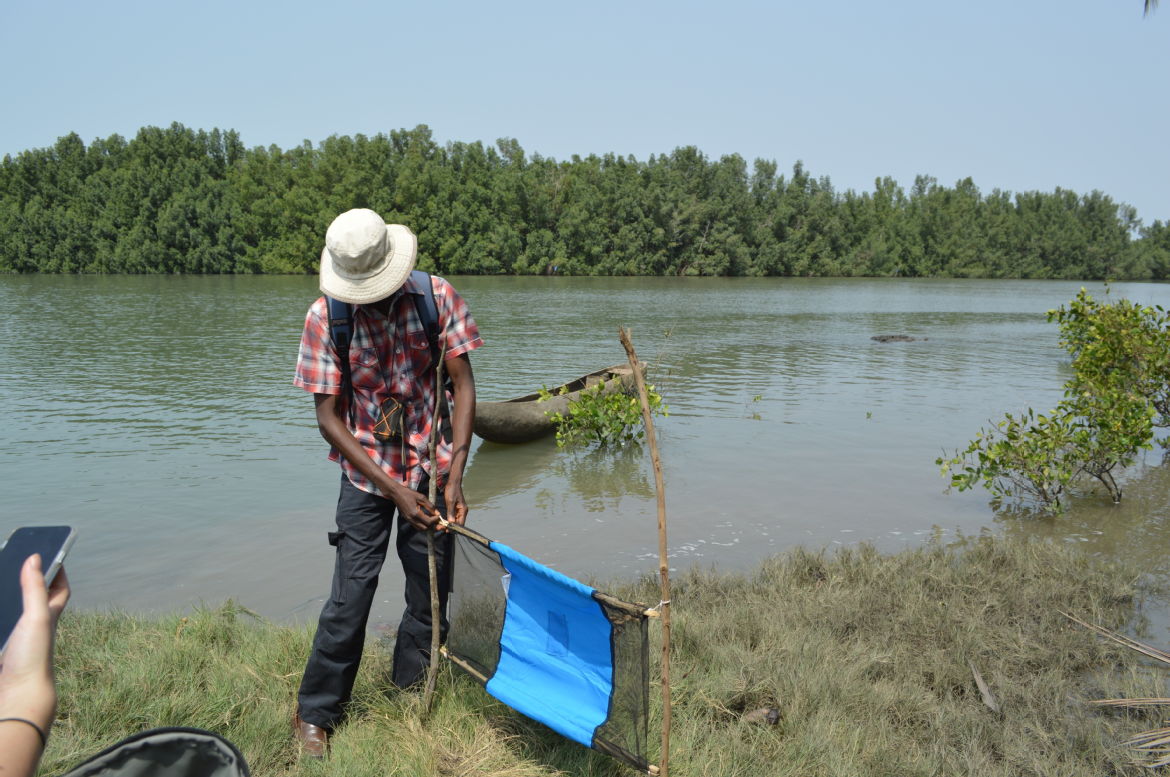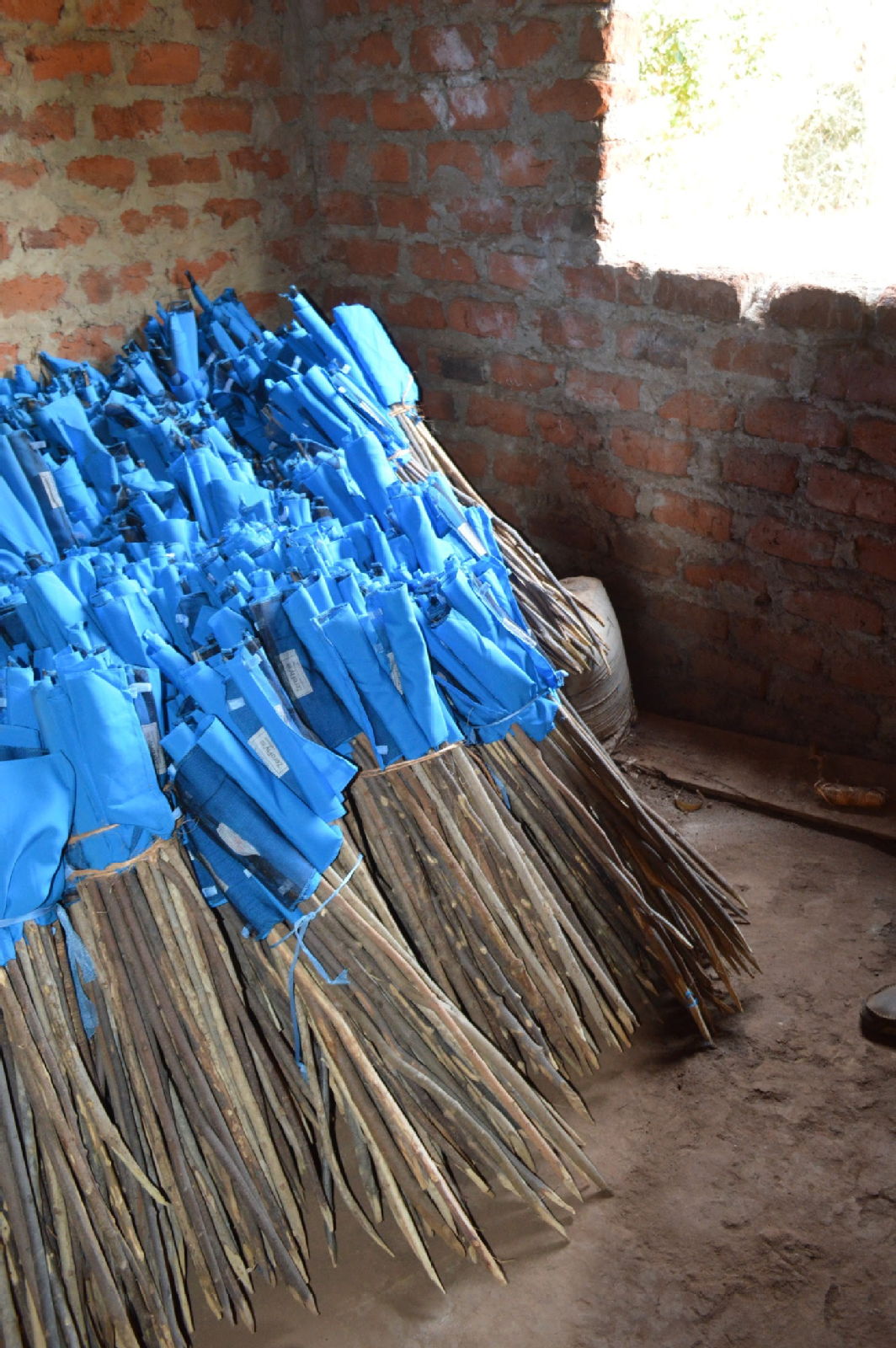HAT
Gambiense human African trypanosomiasis (HAT), also known as sleeping sickness, is a neglected tropical disease endemic in West and Central Africa and transmitted by tsetse flies. Success of medical screen and treat strategies in reducing case burden has lead to the World Health Organization setting two milestones for gambiense HAT: (1) to achieve elimination as a public health problem by 2020, and (2) to achieve zero transmission by 2030.
The team at Warwick are helping to support on-going HAT interventions through mathematical modelling under two projects:
Village-scale persistence
As we approach elimination, it is important to understand maintenance and extinction of HAT infection in a population. Regional elimination rests on the dynamics and persistence at the village scale, therefore we have investigated this potential by developing a stochastic model of HAT infection dynamics. A stochastic framework means chance events are directly captured and true elimination - when the infected population falls to zero - can be observed in model simulations.
The model, which is underpinned by screening and incidence data of HAT in villages within Kwilu province, Democratic Republic of Congo, shows that in contrast to other commonly-studied infections, we predict the long-term persistence of HAT. This is even true in small isolated populations, despite the low prevalence, indicating that rapid re-emergence of the disease is possible if not adequately controlled. In addition, we separate what it means to detect no HAT cases and to have no HAT infection in a population, by simulating the model to inform on probabilities of local elimination when failing to detect any cases on consecutive active screening events. These quantitative results provide insights for public health policy in this region, particularly highlighting the difficulties in achieving and measuring HAT elimination.
Age-structured HAT model
It is known that both risk of infection and participation in active screening campaigns are drivers of HAT transmission. Modelling studies indicate that those most exposed to tsetse are also unlikely to participate in active screening campaigns, which prolongs the time spend infectious and so further increases their contribution to transmission (Rock et al., P&V, 2015). One vital problem that still remains unanswered is to determine exactly who the people in this “high-risk" group are; indentifying them could help improve targeting of active screening. In some locations door-to-door screening - rather than central village screening - has already been implemented, and aims to improve participation of previously missed individuals.
In order to tackle this problem, we are developing an age-structured extension to the Warwick HAT model, which allows different tsetse contact rates for different subsets of the population, stratified by both age and sex. We will examine what may happen if high-risk people start participating in active screening, due to changes such as door-to-door screening. Fitting our new model to local age-structured data, would allow us to provide predictions for infection dynamics, including identification of the "high-risk" group, and so guide policy makers and clinicians in HAT endemic countries in making good use of their available resources.
Publications
- Rock KS, Ndeffo-Mbah ML, Castaño S, Palmer C, Pandey A, Atkins KE, Ndung’u JM, Hollingsworth TD, Galvani A, Bever C, Chitnis N. (2018). Assessing strategies against Gambiense sleeping sickness through mathematical modeling. Clinical infectious diseases 66(suppl_4):S286-92. doi: 10.1093/cid/ciy018 Link opens in a new window
- Büscher, P, Bart, J. M., Boelaert, M, Bucheton, B, Cecchi, G, Chitnis, N, ... Rock KS et al. (2018). Do cryptic reservoirs threaten gambiense-sleeping sickness elimination?. Trends in parasitology. doi: 10.1016/j.pt.2017.11.008
- Mahamat, MH, Peka, M, Rayaisse, JB, Rock, KS, Toko, MA, Darnas, J, ... & Courtin, F (2017). Adding tsetse control to medical activities contributes to decreasing transmission of sleeping sickness in the Mandoul focus (Chad). PLoS neglected tropical diseases, 11(7), e0005792. doi: 10.1371/journal.pntd.0005792
- Rock, KS, Pandey, A, Ndeffo-Mbah, ML, Atkins, KE, Lumbala, C, Galvani, A, & Keeling, MJ (2017). Data-driven models to predict the elimination of sleeping sickness in former Equateur province of DRC. Epidemics, 18, 101-112. doi: 10.1016/j.epidem.2017.01.006
- Rock, KS, Torr, SJ, Lumbala, C, & Keeling, MJ (2017). Predicting the impact of intervention strategies for sleeping sickness in two high-endemicity health zones of the Democratic Republic of Congo. PLoS neglected tropical diseases, 11(1), e0005162. doi: 10.1371/journal.pntd.0005162
- Hollingsworth, TD, Adams, ER, Anderson, RM, Atkins, K, Bartsch, S, Basáñez, MG, ... Keeling MJ, ... Rock KS, et al. (2015). Quantitative analyses and modelling to support achievement of the 2020 goals for nine neglected tropical diseases. Parasites & vectors, 8(1), 630. doi: 10.1186/s13071-015-1235-1
- Rock, KS Torr, SJ, Lumbala, C, & Keeling, MJ (2015). Quantitative evaluation of the strategy to eliminate human African trypanosomiasis in the Democratic Republic of Congo. Parasites & vectors, 8(1), 532. doi: 10.1186/s13071-015-1131-8
- Rock, KS, Stone, CM, Hastings, IM, Keeling, MJ, Torr, SJ, & Chitnis, N (2015). Mathematical models of human African trypanosomiasis epidemiology. In Advances in parasitology (Vol. 87, pp. 53-133). Academic Press. doi: 10.1016/bs.apar.2014.12.003

Active screening in Uganda
Project TeamLink opens in a new window

Setting up tiny target in Guinea
 Tiny targets for deployment in Uganda
Tiny targets for deployment in Uganda
